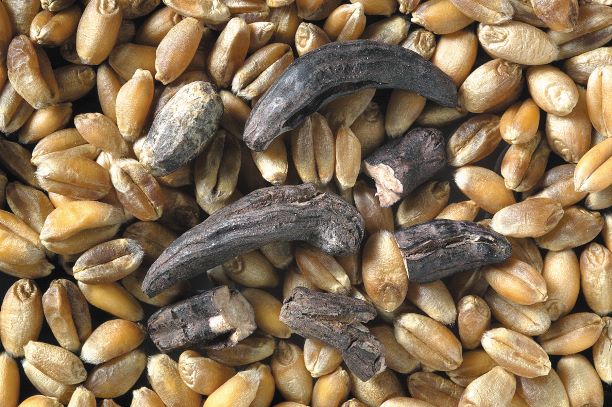- Home
- Knowledge library
- Preservation and storage of cereal grains for livestock feed
Preservation and storage of cereal grains for livestock feed
The options for preservation depend mainly on the dry matter (DM) content of the material being harvested, whether the grain and straw are being harvested separately, and the facilities for on-farm processing and storage.
Back to: Tips for processing, preserving and storing cereal grains for livestock feed
Harvesting
Dry matter content will depend on date of harvest, maturity of grain and weather conditions. Harvesting the crop earlier than conventional combining can be beneficial because it:
- Widens the harvest window
- Is less weather-dependent
- Allows earlier establishment of following crops
- Produces higher DM yields
- Reduces the need to dry the grain
- Offers the potential to feed higher levels
- Promotes better use of nutrients by ruminants, with less risk of acidosis (fermentation of carbohydrates in the rumen, producing lactic acid, which slows down the gut and results in dehydration and death)
Types of storage available
| Storage option | Clamps and plastic tubes | Barn stack | Wet grain storage on floor, possibly outdoors | Good grain storage |
| Suitable storage feeds | Fermented wholecrop, urea-treated wholecrop, alkaline-ammonia treated wholecrop, crimped grain maize silage | Straw, strawlage | Urea-treated grain, alkaline ammonia treated grain, caustic-soda-treated grain, propionic-acid-treated grain | Dried grain, whole or rolled moist grain |
Cereals harvest guide

Shaded boxes indicate stages of growth suitable for each conservation method.
DM = Dry matter, MC = Moisture content
How to avoid mouldy grain
Whatever storage system is used for cereal feeds, it is important to avoid feeding mouldy grains.
Grain affected by fusarium or ergot must not be fed, as the mycotoxins produced can seriously affect animals, leading to poor production, abortion, kidney failure and even death.
It is important to control disease in growing crops to avoid these problems.
Consider testing for mycotoxins if there is a likely incidence of fusarium in the crop, or visible signs of chalky white, shrivelled or pink grains. When taking samples for testing, make sure a fully representative sample of the whole heap or bulk load is taken, as distribution of mycotoxins is not necessarily uniform.

Useful information on mycotoxins is available in the BRP+ document Mycotoxin contamination in animal feed and forages

